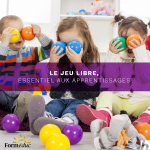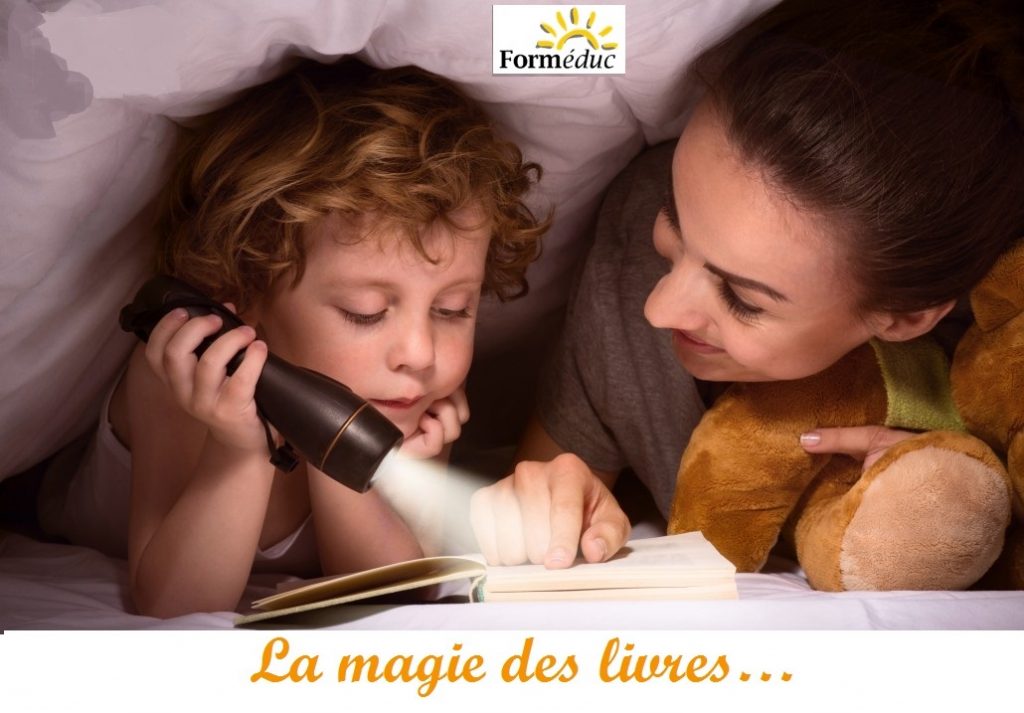

- 23 January 2021
- |
- Andrée Bouchard
How many times has your child asked you to tell them a story? Probably hundreds… But did you know that only 36% of parents read to their children? That’s according to a CROP survey. Quite a surprising result, especially when you consider that reading, introduced early in a child’s life, has a positive impact on vocabulary and, later, on academic success.
The reading period is a privileged and eagerly awaited time for the child. It enables the adult to establish meaningful contact with the child and pass on knowledge. Frequent reading, by both the adult in charge and the child, is a front-line tool for literacy and academic success.
Here are a few tips on choosing books and reading activities for your children’s ages:
0 to 6 months
- Choose soft-cover, waterproof books.
- Choose colorful books with different textures.
- Offer baby musical books.
- Tell the story to the baby in a different voice and with different facial expressions.
- Repeat sounds and words several times.
- Tell the same story several times.
- Practice reading in a relaxing, comfortable environment for the baby.
6 to 18 months
- Choose books with hard, laminated covers.
- Choose colorful books with different textures.
- Tell the story to the baby, changing his voice and making different facial expressions.
- Offer the baby interactive books.
- Offer the baby meaningful books such as imagiers.
- Sing songs known to the child and related to the story read.
- Tell the same story several times.
- Name the objects and colors you see in the images.
- Discuss the book with the baby, referring to him as a person (e.g. “Look, the little boy has a blue coat. You have a blue coat too, so you can go out and play”).
- Take advantage of the reading period to create physical contact with the baby, if he agrees (e.g., sitting the baby on your lap).
- Create a soft, comfortable reading corner for your baby.
18 to 36 months
- Choose books of all kinds and sizes.
- Choose books with large, colorful pictures and different textures.
- Tell the story to the child in a different voice, using objects such as puppets.
- Take the time to answer children’s questions, while teaching them the concept of the right to speak.
- Let the child choose the book he’d like to be told.
- Allow children to tell a story in their own way. You’ll help them develop their creativity and imagination, and boost their self-esteem.
- Read at the same time of day. This period should be associated with relaxation and pleasure.
- Create a soft, comfortable reading corner for the child.
3 to 6 years
- Choose books of all kinds and sizes.
- Give priority to educational books, but don’t limit the choice of books. Reading should be an activity of discovery.
- Offer children a variety of books corresponding to their interests.
- Ask the child questions to check his or her appreciation, interpretation (which may vary from child to child) and understanding of the book.
- Name different situations experienced by the child that relate to those in the book.
- Help children recognize certain sounds, letters and even words.
- Allow children to tell a story in their own way. You’ll help them develop their creativity and imagination, and boost their self-esteem.
- Read at the same time of day. This period should be associated with relaxation and pleasure.
- Create a soft, comfortable reading corner for the child.
The love of books is a priceless gift to give a child. So don’t hold back!
Any time is a good time to offer your child a book, whether at naptime or bedtime, as a present or an activity, to make discoveries or simply to pass the time.
Survey source: https://fondationlitterairefleurdelys.wordpress.com/2014/09/07/sondage-crop-pour-universitas-au-sujet-de-la-lecture-aux-enfants-par-les-parents/comment-page-1/




